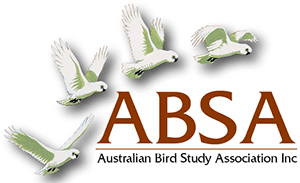BREEDING SUCCESS AND TIMING OF NESTING BY FOREST BIRDS ON THE NORTHERN TABLELANDS OF NEW SOUTH WALES, AUSTRALIA
| Posted: |
04/06/2021 |
| Author(s): |
A. Given, B. J. S. Studholme, C. Duncan, Harry F. Recher, I. G. McLean |
The pattern and timing of nesting by 57 bird species in open eucalypt Eucalyptus forest on the northern tablelands of New South Wales (30°30'S, 151° 40'E; 990-1 390 m ams!) were studied in the breeding seasons of 1988-1992, 1994, and 1996. The first nests were initiated in mid-July with numbers increasing through August. Nest initiation peaked in early September and again in mid- to late October, but declined rapidly in November. Few birds initiated nests in December and no new nests were found after December. From 1988 to 1992, 29
per cent of open-nests fledged young; 70 per cent of nests that failed were predated, two (3%) were lost due to storms and the remainder were abandoned without laying. Weather conditions affected the number and species of birds nesting, the time nests were initiated, and success at fledging young. 1994 had a dry autumn-spring with catastrophic rain, hail and wind storms in late October and early November. 1996 had above average rainfall without climatic extremes during the nesting season. Of the 49 species for which data are available, 18 had failed to breed by the end of November 1994, whereas in 1996 all but three species had initiated nesting by this
time. Environmental factors influenced each species uniquely. Of the 28 species that bred in both years, 15 showed similar timing, while 13 differed in timing by 2-8 weeks, 1 O of which started later in 1994 and three earlier. Largely due to poor weather and the lack of rain, only 29 per cent of nests (both open- and hole-nests) in 1994
succeeded in fledging young compared with 41 per cent in 1996 when predation rates on nests appeared higher, but weather conditions were more favourable.
>> Download Abstract |
File Size: 172 KB
>> Download Complete PDF | File Size: 1.39 MB
